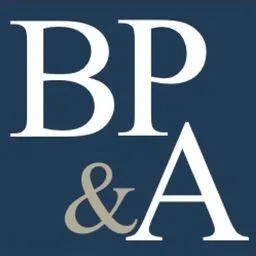
Five ways a Scrum Master can build trust on a Scrum Team
Let us look at how a Scrum Master can build trust on a Scrum Team
In our Certified ScrumMaster course, we discuss Servant Leadership and how the Scrum Master acts as a catalyst in creating a high performing Scrum Team. Psychological safety is paramount for innovation & creativity to emerge within the team dynamic. These 5 tips can be very effective in boosting team psychological safety and trust.
1. The Scrum Master can facilitate the creation of team working agreements.
The Scrum Master often will facilitate the Scrum events (meetings). However, the Scrum Master should also elect to call for additional meetings as needed. A meeting to establish working agreements will establish team norms and shared accountability across the Scrum team. Remember, the Scrum Master should not be policing and enforcing these working agreements, but instead acting as a facilitator & coach to help the team create shared alignment around common expectations. The Scrum team has a shared accountability to enforce these working agreements with each other, and the team often uses the Sprint Retrospective as the opportunity to inspect & adapt between those behaviors which create workability and those that do not.
2. The Scrum Master leads by example and honors their own word.
A Servant leader sets the example for all to follow. As a servant leader, the Scrum Master can often take the initiative and go first. For example, if the team struggles with timeliness, the Scrum Master can ensure they themselves are on time in order to set the example for other teammates to follow.
Breakdowns occur when people say one thing and do the other. The Scrum Master should strive to create workability in all situations. Having an alignment to one’s own word becomes paramount. Landmark Education describes this as Integrity.
When someone says they are going to do something and does not follow through, there is a breakdown of trust. It can be as simple as a failure to call someone on the phone at an agreed upon time. We highly recommend The Landmark Forum to anyone who struggles with being their own word, as it is a 3-day immersive experience which allows participants to truly internalize this important distinction.
3. The Scrum Master listens with empathy when others are speaking.
Showing respect is often seen as being polite and being mindful of one’s spoken words to another. However, an often overlooked aspect of being respectful is how we listen. Listening with judgment is how most people navigate most interactions in their lives. Instead, the Scrum Master should strive to listen with empathy from the perspective of those are who are speaking. Some Scrum Masters and Agile Coaches use The Empathy Toy™ by Twenty One Toys to help teach empathy to their teams.
Additionally, coaching techniques such as the Third Entity from ORSC (Organization & Relationship Systems Coaching) can be used by Scrum Masters & Agile coaches to help teammates create empathetic rapport with one another. We highly recommend The Foundational of ORSC course for Scrum masters & Agile coaches to learn more about this and similar techniques.
4. The Scrum Master encourages non-violent communication.
We have to use professional language. Sometimes frustrations build within a team and executives are blamed for their incompetence. “He must be shot,” exclaims one coder! “The product owner is the single throat to choke,” says another. “Single wring-able neck” is another term to describe the product owner. This kind of alarmist language creates dissonance and stress.
We should strive to avoid trigger words. “Grooming” is now a trigger word in many cultures, and out of respect for these cultures, we now refer to the backlog readiness meetings as PBR – Product Backlog Refinement.
The Center for Non-Violent Communication (NVC) is a great place for Scrum Masters & Agile coaches to learn more about how to speak inclusively and collaboratively with others. A highly recommend book from this organization is Nonviolent Communication: A Language of Life, 3rd Edition: Life-Changing Tools for Healthy Relationships (Nonviolent Communication Guides) by Marshall B Rosenberg, PhD.
5. The Scrum Master encourages backlog refinement.
At the end of every Sprint, the Scrum team delivers the potentially-shippable increment to the business and stakeholders provide feedback during Sprint Review. Failure to have ongoing backlog refinement sessions typically leaves backlog items too large for the developers to complete during their next sprint. This jeopardizes the increment—with unfinished work typically being kicked into the following sprint.
This lack of a coherent product increment at the end of every sprint creates stakeholder apathy and contributes to lack of stakeholder engagement. Forecasted dates become jeopardized, or team members scramble to work overtime. Scrum Masters should strive to prevent these things from happening. The product increment should be reviewed every sprint with stakeholders providing feedback. This helps to foster business/IT alignment and will gradually improve trust.
These five approaches to building trust within a Scrum team can be a catalyst for building trust within the larger organization, helping agile adoption by setting an example to follow.
Brett Palmer & Associates | Copyright 2024 All Rights Reserved
High-performance training & coaching for individuals, entrepreneurs & businesses.
Elevate your game!

